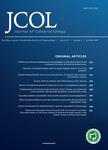版权所有:内蒙古大学图书馆 技术提供:维普资讯• 智图
内蒙古自治区呼和浩特市赛罕区大学西街235号 邮编: 010021

作者机构:Post-graduation Program in Medical Sciences Universidade Federal Do Rio Grande Do sul (UFRGS) RS Porto Alegre Brazil Experimental Laboratory of Pulmonary Sciences and Inflammation Hospital de Clínicas de Porto Alegre (HCPA) RS Porto Alegre Brazil Post-graduation Program in Biotechnology Universidade Federal de Pelotas (UFPEL) RS Pelotas Brazil School of Medicine Pontifícia Universidade Católica Do Rio Grande Do sul (PUCRS) RS Porto Alegre Brazil Post-graduation Program in Biological Sciences - Fisiology Universidade Federal Do Rio Grande Do sul (UFRGS) RS Porto Alegre Brazil Health School Universidade Do Vale Do Rio Dos Sinos (UNISINOS) RS São Leopoldo Brazil
出 版 物:《Journal of Coloproctology》 (J. Coloproctol.)
年 卷 期:2022年第42卷第3期
页 面:238-244页
主 题:anti-inflammatory antioxidant campsiandra laurifolia ulcerative colitis
摘 要:Ulcerative colitis (UC) affects the mucosa and submucosa of the large intestine. One of the mechanisms involved in its etiology is oxidative stress (OS), directly involved in the inflammatory process characteristic of UC. The Campsiandra laurifolia, known as acapurana, was described as possessing antioxidant properties. We used 24 male Wistar rats, divided into control (CO), control + acapurana (CO + A), colitis (CL), and colitis + acapurana (CL + A) groups. This study performed histological analysis, measuring anal sphincter pressure (ASP) and lipoperoxidation (LPO). The activity of the antioxidant enzyme superoxide dismutase (SOD) and glutathione (GSH) levels were evaluated. The expression of the nuclear factor kappa B (NFκB) and inducible nitric oxide synthase (iNOS) was analyzed by immunohistochemistry. The statistical analysis used was the one-way analysis of variance (ANOVA), followed by the Student-Newman-Keuls test;values were expressed as mean ± standard error, and the significance level was p 0.05. In the animals of the CL group, we observed the destruction of the crypts and the presence of mucosal ulcers, edema, and submucosal inflammatory infiltrate, as well as increased damage to the intestinal mucosa, reduced ASP, increased LPO and SOD activity, reduced GSH levels, and increased expression of NFκB and iNOS. The administration of C. laurifolia in the CL + A group was shown to cause regeneration of crypts, reduction of inflammatory infiltrate, reduction of damage to the intestinal mucosa, increase in ASP, and reduction in LPO with the restoration of SOD activity and GSH levels. The immunohistochemistry of NFκB and iNOS was significantly reduced. Therefore, the C. laurifolia aqueous extract appears to exert an antioxidant and anti-inflammatory effect in rats with AA-induced colitis. © 2022. Sociedade Brasileira de Coloproctologia. All rights reserved.